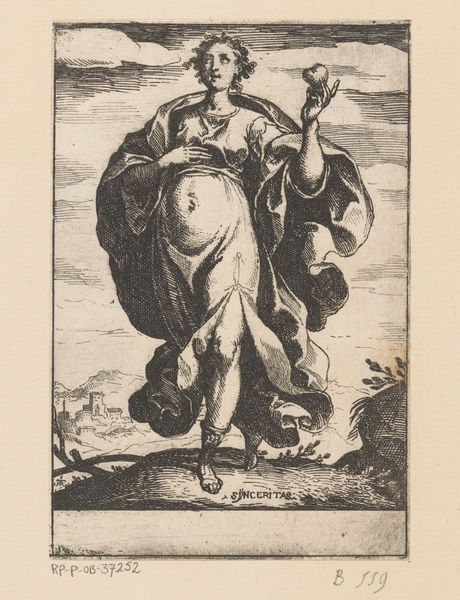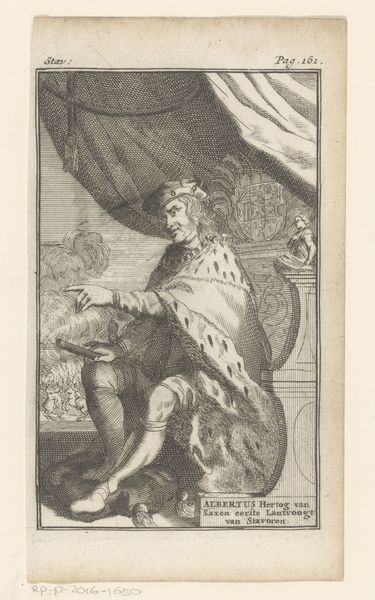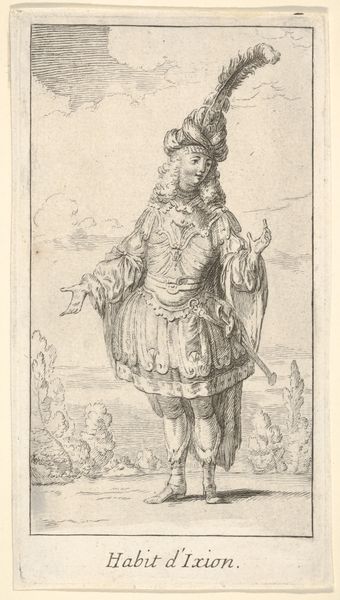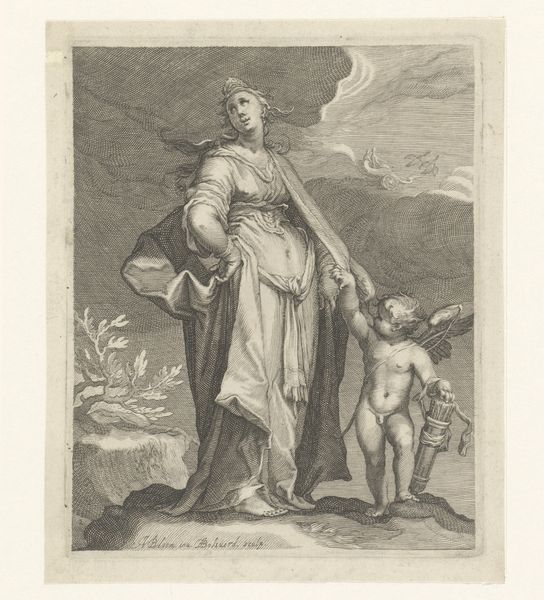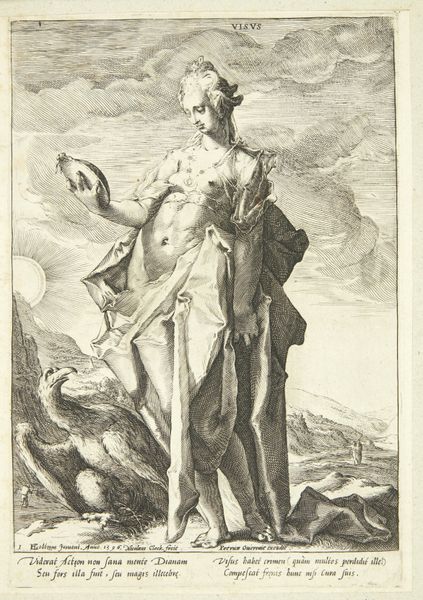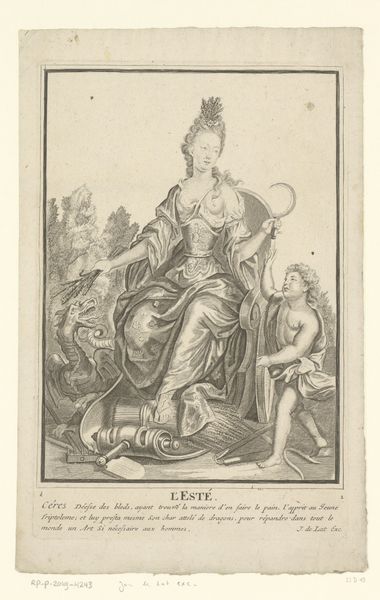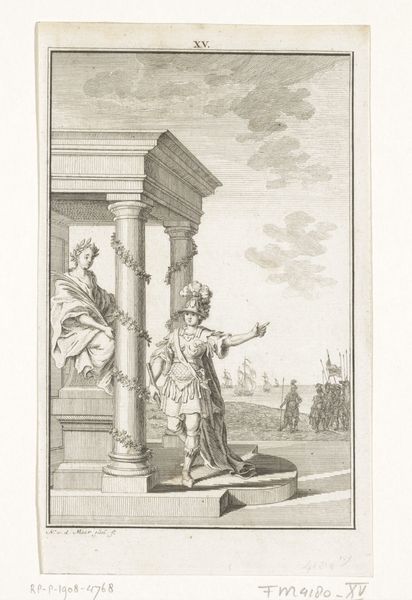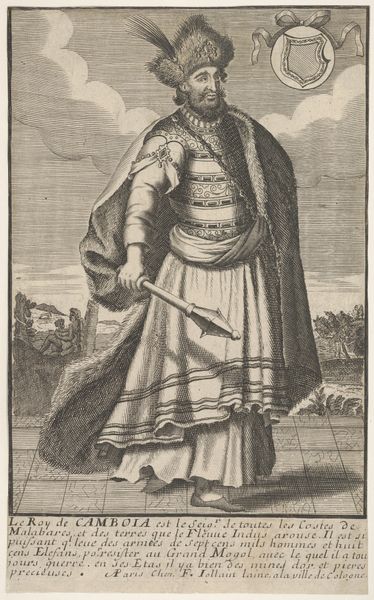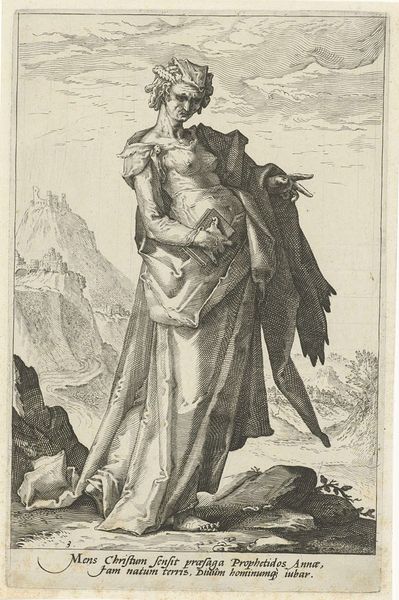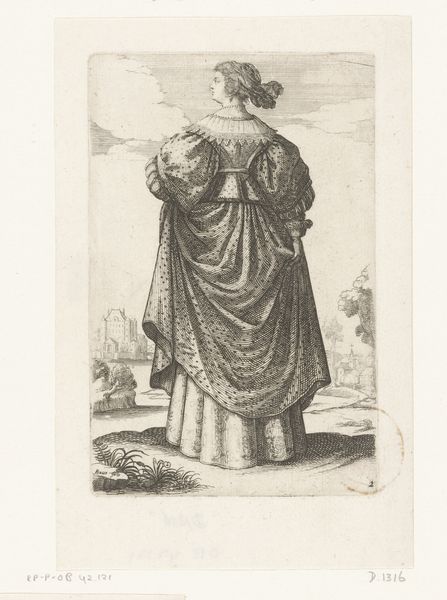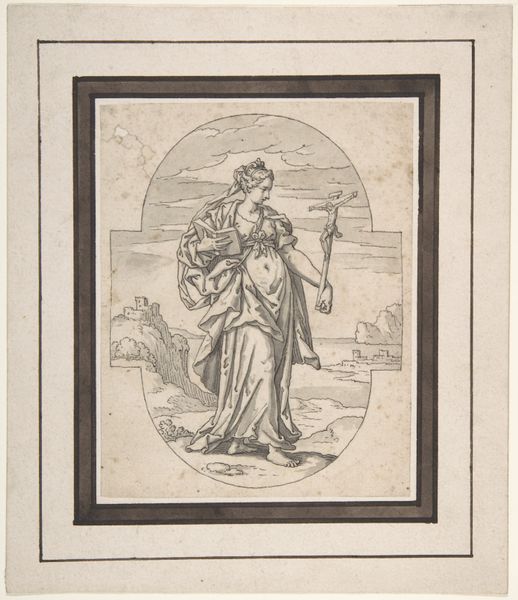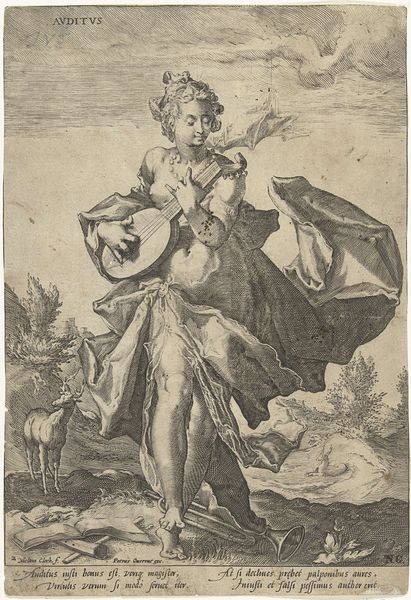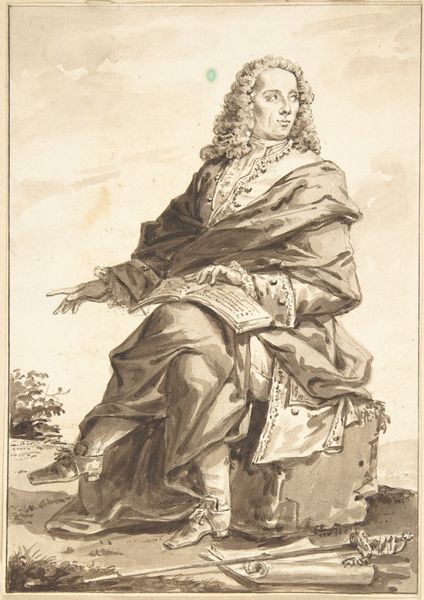
print, engraving
#
portrait
#
baroque
# print
#
old engraving style
#
landscape
#
figuration
#
history-painting
#
engraving
Dimensions: height 268 mm, width 183 mm
Copyright: Rijks Museum: Open Domain
Curator: Look at this captivating engraving entitled "Bronzen Eeuw", which roughly translates to "The Bronze Age," dating from sometime between 1734 and 1756. Editor: Intricate. The texture feels almost woven—dense lines shaping the figure, open space defining light. Stark. A curious melancholic stillness about it, wouldn't you agree? Curator: Absolutely. Observe how the engraver utilizes line density to build volume and shading. The image clearly references classical allegories. The tools and practices employed for this print represent a convergence of artisanal skill and an emerging print culture, indicative of evolving manufacturing processes and distribution of visual media. Editor: The way the light catches the fabric... note the contrast with the rougher marks rendering the background landscape. There’s tension here, a kind of idealized artifice playing against the natural world, even in a degraded bronze age. What are your thoughts on the figure’s attire? It’s elaborate and seems important. Curator: That attire offers valuable information about contemporary fashions and cultural attitudes. These prints had roles beyond art objects. They informed consumption habits. Wealthy individuals would have circulated engravings like this to spread and confirm their access to taste and cultural capital. The figure stands as a symbol for bronze and copper industries. Editor: But consider purely formal relationships for a moment. That building in the background repeats shapes found in the figure’s ornate headdress. Is this compositional decision accidental? Is there symbolic relevance between the two? Curator: Everything, especially the presence and status of the image itself, points back to questions of value, utility, and exchange, how meaning is constructed through circulation. And what is the social context into which art is brought forth. Editor: Indeed. It brings to mind how the formal elegance of this engraving acts as a vehicle to both present and perhaps mask a certain social unease or tension related to labor. Well, what do you think? Shall we head along to the next piece? Curator: Yes, absolutely. It is vital we keep in mind this artwork's value within historical and industrial production frameworks.
Comments
No comments
Be the first to comment and join the conversation on the ultimate creative platform.
